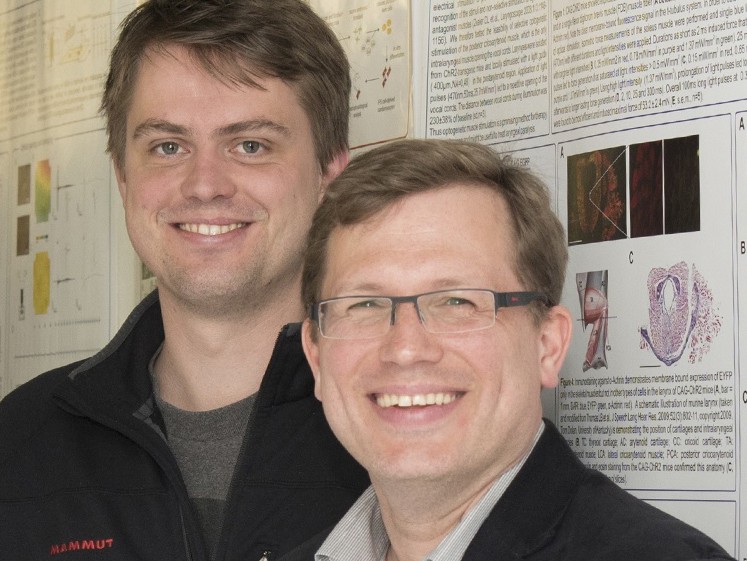
Tobias Brügmann (Institute of Physiology I, University of Bonn, Life and Brain Center, Bonn, Germany) and others report in The Journal of Clinical Investigation that optogenetic defibrillation— using expression of the light-sensitive-channel channelrhodopsin-2 (ChR2) in cardiac tissue—terminated ventricular arrhythmias in the hearts of transgenic mice. They also note that, according to a computer model of a human heart, the technology could also potentially be used successfully in humans.
Brügmann et al comment that while implantable cardioverter defibrillators (ICDs) show “life-saving potential” when used in patients with ventricular arrhythmia, they are also associated with “significant adverse effects, such as structural damage of cardiac tissue worsening the underlying cardiac disease”. Senior author Philipp Sasse (Institute of Physiology I, University of Bonn, Life and Brain Center, Bonn, Germany) adds: “When an implanted defibrillator is triggered, which unfortunately can also happen because of false detection of arrhythmia, it is a very traumatic event for the patient. Therefore, there is need for alternative pain-free and less deleterious termination of ventricular arrhythmias.”
In the study, the authors used “optogenetic” stimulation of mouse hearts, into which genes were inserted for channelrhodopsins. These channels are derived from green algae and change the ion permeability of heart cell membranes when illuminated. When Brügmann et al. triggered ventricular fibrillation in the hearts, a light pulse of one second applied to the heart was enough to restore normal rhythm. “To further enhance optogenetic defibrillation efficacy, we developed an illumination protocol involving four consecutive light pulses, which yielded a very high success rate of 97%±0.01%,” they state. Additionally, neither illumination of ChR2-negative hearts nor ChR2 expression in the absence of illumination was found to cause or facilitate arrhythmia termination.
Co-lead author Brügmann says: “This is a very important result. It shows for the first time, experimentally in the heart, that optogenetic stimulation can be used for defibrillation of cardiac arrhythmia.”
To determine if their findings could be replicated in humans, the authors tested optogenetic defibrillation in a computer model of the heart of a patient after myocardial infarction. According to co-lead author Patrick Boyle (Institute for Computational Medicine and Department of Biomedical Engineering, Johns Hopkins University, Baltimore, USA), the simulations showed that a light pulse to the heart would also stop the cardiac arrhythmia of this patient. However to achieve this result, the authors had to adapt their methodology—using red light to stimulate the human heart cells instead of the blue light used in mice. This aspect of the study demonstrates the important role that can be played by computational modelling to guide and accelerate the systematic development of therapeutic applications for cardiac optogenetics.
Sasse concludes: “Our data show the fundamental feasibility of optogenetic defibrillation for the treatment of ventricular fibrillation.” However, he adds that the new method is still in the stage of basic research and until implantable optical defibrillators can be developed for the treatment of patients, it will still take at least five to 10 years before optogenetic defibrillation can be used in clinical practice.
In the video below, scientists from Johns Hopkins University give their insights on this new technology.












